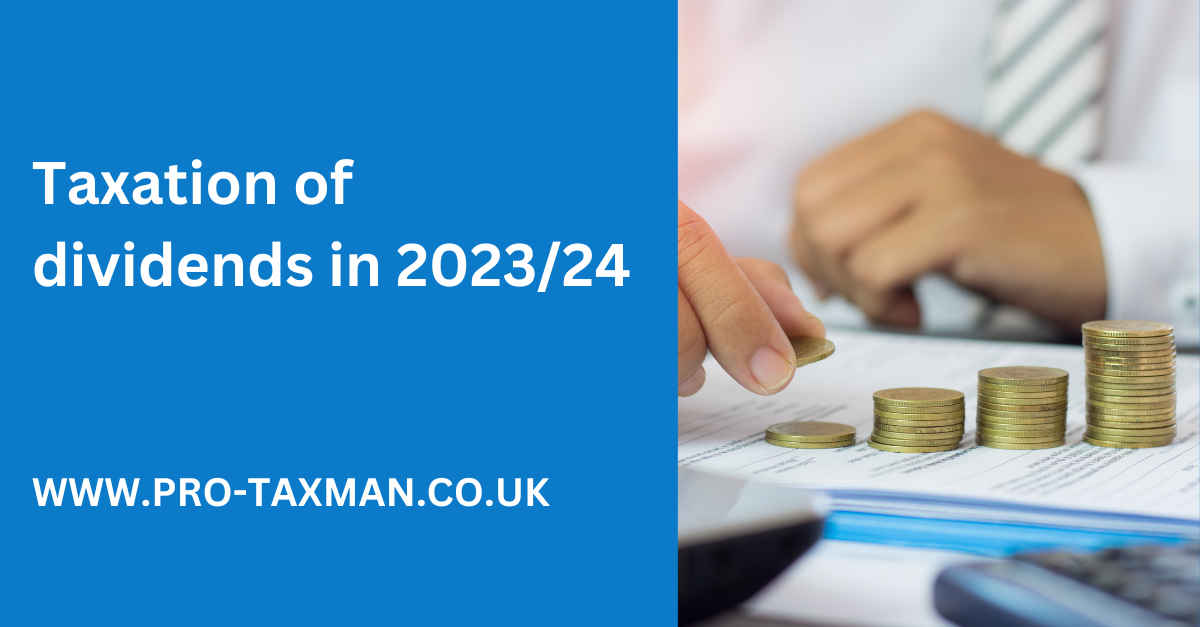If you have a personal or family company, taking dividends is a popular and tax-efficient way to extract profits. However, while they remain tax efficient, recent tax changes have eroded some of the advantages. What do you need to know when planning your dividend extraction strategy for 2023/24?
Impact of corporation tax changes
From 1 April 2023, changes are made to the way in which corporation tax is calculated. If your profits are more than £50,000, you will pay corporation tax at a higher rate than prior to that date, reducing the post-tax profits that you have available to pay as a dividend. Remember, dividends are paid from retained profits and you can only pay a dividend if you have sufficient retained profits from which to pay it. Even if your profits are unchanged, you may not be able to maintain previous dividend payments if your effective rate of corporation tax rises from 1 April 2023.
Reduction in the dividend allowance
All individuals, regardless of the rate at which they pay tax, are entitled to a dividend allowance. This was set at £2,000 for 2022/23 but is halved to £1,000 for 2023/24. It is to be further reduced to £500 for 2024/25.
The dividend allowance operates as a zero-rate band. Dividends which are covered by the allowance are taxed at a zero rate, but the allowance uses up some of the tax band in which the dividends (taxed as the top slice of income) fall. The reduction in the dividend allowance will reduce the profits that can be extracted free of further tax.
In a family company, an alphabet share structure is often used to facilitate the payment of dividends to family members whose dividend allowance would otherwise be wasted, increasing the profits that can be extracted tax-free. This strategy may need reviewing in light of the falling dividend allowance.
Dividend tax rates
Dividends are attractive as the dividend tax rates are lower than the income tax rates. However, it should be remembered that corporation tax has already been paid on the profits which are paid out as dividends.
The dividend tax rates were increased by 1.25 percentage points from 6 April 2022 pending the introduction of the now-cancelled Health and Social Care Levy. Although the Health and Social Care Levy is not going ahead, the dividend tax rates are to remain at the increased levels for 2023/24. Consequently, dividends are taxed at 8.75% where they fall in the basic rate band, at 33.75% where they fall in the higher rate band and at 39.35% where they fall in the additional rate band.
Additional rate threshold
The dividend additional rate will apply if dividends are paid in excess of the dividend allowance and taxable income exceeds the additional rate threshold. This is reduced to £125,140 for 2023/24 from £150,000 previously.
Summary
As a result of these changes, you may have less profits available from which to pay dividends. Where dividends are paid, only £1,000 will be tax-free. Above this level, dividends will continue to be taxed at the higher rates introduced from April 2022. Further, the additional rate will now bite where taxable income exceeds £125,140.
Need professional accounting service or accounting advice? Contact us to book a 15-min Free Consultation with us today.
To find out more please follow us on Facebook, Twitter, or LinkedIn. Feel free to contact us on 0333 006 4847 or request a call back by texting 075 6464 7474

